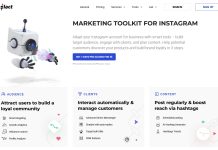Whether you offer products or services to businesses or consumers, the most crucial fact to know is that not everyone needs what you sell. Being able to tell who might be interested in your services and products can help significantly increase your sales and establish a better position in any given market.
That is where the concept of a potential target market becomes relevant. Let’s see what it is, how it can benefit your business, and what you need to discover your potential target market.
To better understand it, we must quickly go through the potential target market definition.
What is the potential target market definition?
If you are familiar with market research, you probably know about the target market concept. It refers to consumers you identify as those to whom you will market and sell products and services. What happens when you put “potential” in front of it?
Here is the potential target market definition:
“Potential target market refers to a group of people that will most likely benefit from the products or services in your offer and will most likely buy what you are selling.”
Why do you need to identify a potential target market? Can’t you immediately skip to defining your actual target market instead of spending time and resources on determining the potential one? Let’s find out.
The importance of identifying a potential target market
Modern markets are saturated and volatile. Entering one with an aggressive and large-scale marketing campaign doesn’t necessarily have to yield results. The only thing you can count on in this scenario is that you will spend big money on marketing and fail to generate a satisfying ROI.
That’s where a potential market comes in. Instead of just jumping the train, identifying the potential market will help you make sure that there is a need for your services or products in the target market. It will help you streamline defining your target market and discover the pain points, needs, and preferences of prospective consumers or businesses.
What do you need to verify if a target market has potential?
Whether you work with B2C or B2B data, you can’t verify whether the target market has potential or doesn’t without data.
Data is the missing puzzle piece that will help you assess the markets and identify those with the most business potential.
We are talking about a specific data type. In the B2C niche, it is called demographic data. In the B2B niche, it’s called firmographic data, which is a corporate version of demographic data. Data can help you discover whether the market you are currently researching is, in fact, your potential target market.
For instance, demographic data entities include age, gender, income, academic achievement, and other similar information. On the other hand, firmographic data entities contain a company name, number of employees, offices, revenue, and trend.
There are two ways of getting the data. You can get it through surveys or buy ready-to-use data on relevant marketplaces.
How to identify a potential target market
The most challenging part of identifying a potential target market is getting the necessary data. Once you have the data, you need to discover the composition of the target market. It refers to all characteristics of consumers or businesses in a target market.
Making an ideal customer profile is necessary to identify a potential target market. This profile will contain all the characteristics of that customer.
In the B2C category, the ideal customer profile can specify age, academic achievement, and income. In B2B, it can define the size of the company, revenue, and trend.
While it marks the start of your potential target market identification journey, you are far from the finish line. You will also need to segment other data, including:
- Use-based data: Marketers use this descriptor when researching markets. It provides information on how potential customers will use your service or product.
- Benefit data: This data can help you identify the segments that seek some benefits your products or services deliver.
- Geographic data: This information can help you narrow your target market to a specific geographic region such as a ZIP code or an entire country.
Benefits of a potential target market
When you have identified your potential target market, you can reap the following benefits:
- Defining a target market: With access to a potential target market research report, you can further segment and identify it.
- Efficient marketing: The data you gather on your potential target market can help you filter specific segments, fine-tune your marketing messaging, and boost your conversion rates and sales.
- Informed investment decisions: Identifying a potential target market can help companies make informed investment decisions and identify segments with the highest sales potential.
Conclusion
We hope our potential target market definition has helped you understand this concept better. In the era of personalized marketing, the only way to improve marketing and sales strategies is to know to whom you are selling.
That’s why collecting and using the data has become crucial for businesses across industries. With relevant data at your disposal, you can assess if there are business opportunities in the market and segment consumers to achieve optimal marketing and sales results.



